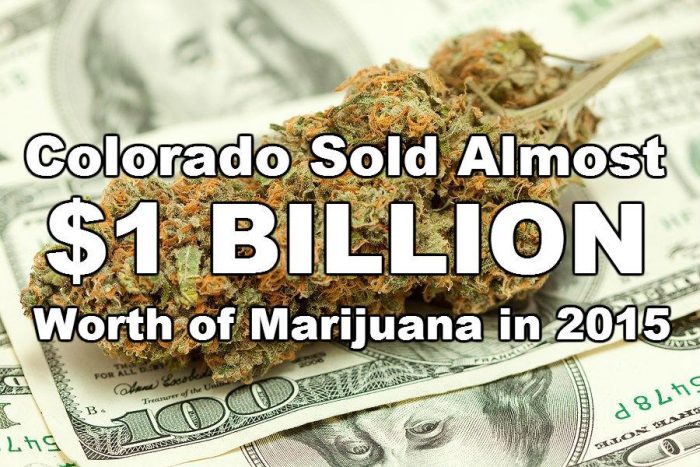The marijuana industry created more than 18,000 new jobs in Colorado last year, and had a $2.39 billion impact on the state, according to a new report released October 26. [1]
In a study conducted by the economic consulting firm Marijuana Policy Group (MPG), researchers looked at two years’ worth of sales numbers from Colorado and found that legalization resulted in nearly $1 billion in retail sales in 2015.
Source: WeAreChange.org
There was also an indirect economic impact from increased demand on local goods and services, such as growers renting warehouse space and purchasing high-tech lighting and irrigation equipment. Then there are the contractors, lawyers, bookkeepers, and other companies that cannabis retailers rely on.
Study co-author and MPG founder Adam Orens said:
“If this is done right, regulated right, taxed right, this industry can bring real economic benefits to a state.
If the state or the local governments manage, permit and enforce [marijuana regulation] in a thoughtful way, then this can have real benefits.”
According to the Marijuana Policy Group, the legal marijuana industry’s growth isn’t so much the result of new, previously untapped demand for weed, but rather from a reduction of the unregulated black market.
Orens and his co-authors wrote:
“It would be easy to confuse the rapid growth in marijuana sales with an inherent growth in marijuana demand. But that is not the case. Legal marijuana sales are increasing due to a supply shift — away from gray and black market suppliers, toward licensed suppliers.”
The black market is what keeps marijuana prices high, and what most people associate with drug-related crime. Opponents of the War on Drugs have been pushing for decriminalization for decades, partly because it reduces the black market.
In Colorado and Washington, D.C., the black market still exists, but the new study suggests it has been greatly reduced by legalization. In fact, the MPG predicts that by 2020, more than 90% of the marijuana market will be supplied by regulated, state-licensed dealers. Home growers and a small fraction of unregulated and “grey market” dealers (dealers who aren’t entirely legally legitimate) will comprise the remaining 10%.
The report states:
“Applying the marijuana impact model to Colorado, it was found that each dollar spent on retail marijuana generates $2.40 in state output. This compares favorably with general retail trade, which yields $1.88 per dollar. The more traditional (and sometimes subsidized) mining sector generates $1.79 per dollar. General manufacturing generates $1.94 per dollar, and casinos generate just $1.73 per dollar of spending.
Other industries have lower output yields because their inputs are sourced from outside of the state, or because the profits are remitted to corporate owners that exist primarily outside of the state as well.” [2]
However, Oren stresses that the report only examined the economics of marijuana legalization in Colorado, not its effects on public health or criminal justice. [1]
At that point, the MPG expects growth in the state’s cannabis industry to slow, resembling growth in other retail industries, which tend to follow population growth.
Additionally, the Marijuana Policy Group found:
- Marijuana is currently bringing in tax revenue at three times the rate of the alcohol industry. MPG predicts that by 2020, pot will overtake cigarette taxes as a revenue-generator.
- Marijuana taxes brought in about $121 million in revenue last year. MPG expects that number to increase to about $150 million by 2020.
In 2014, the marijuana industry brought more than 10,000 new jobs to Colorado.
In the Spring of 2014 – just three months after marijuana was legalized in Colorado – the city of Denver enjoyed a 14.6% decrease in crime.
Tax revenue from legal weed has funded scholarships for high school seniors in need.
And speaking of young people, a report from this past July showed that youth marijuana use stayed at about the same level post-legalization, shattering the myth that decriminalizing marijuana sends straight-A students into the depths of addiction, despair, and destroyed futures.
Sources:
[2] The Cannabist













